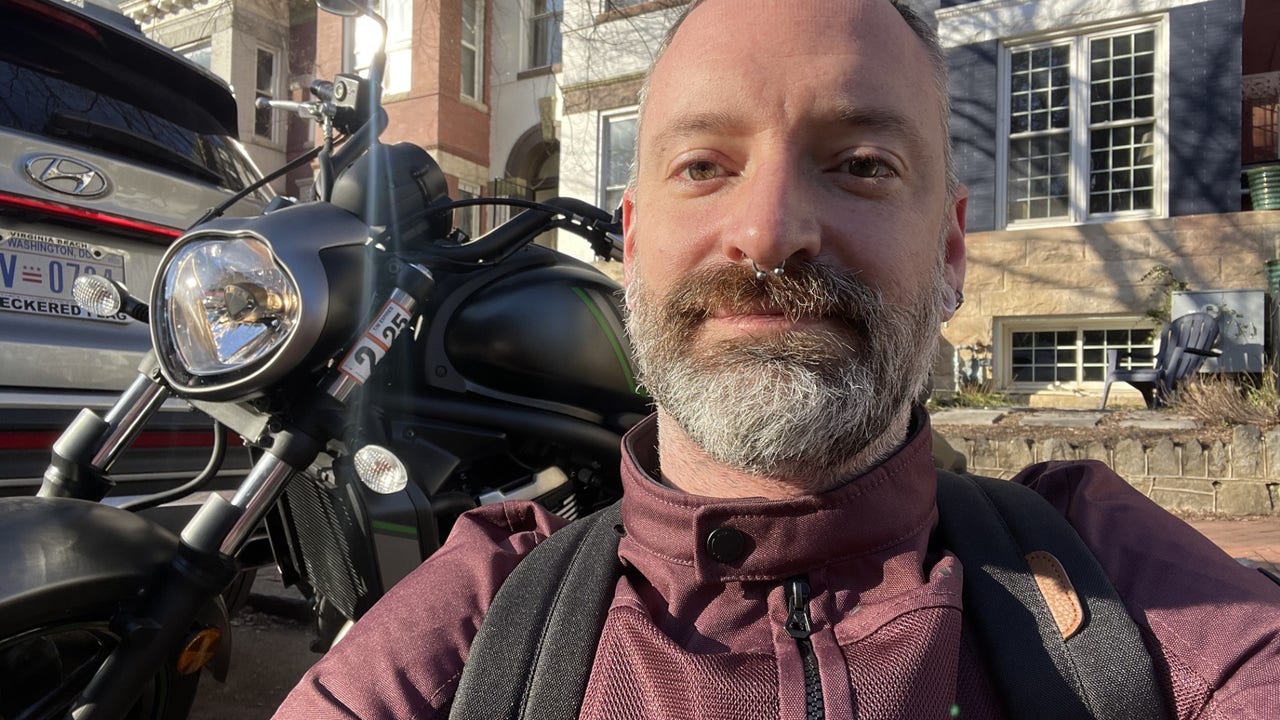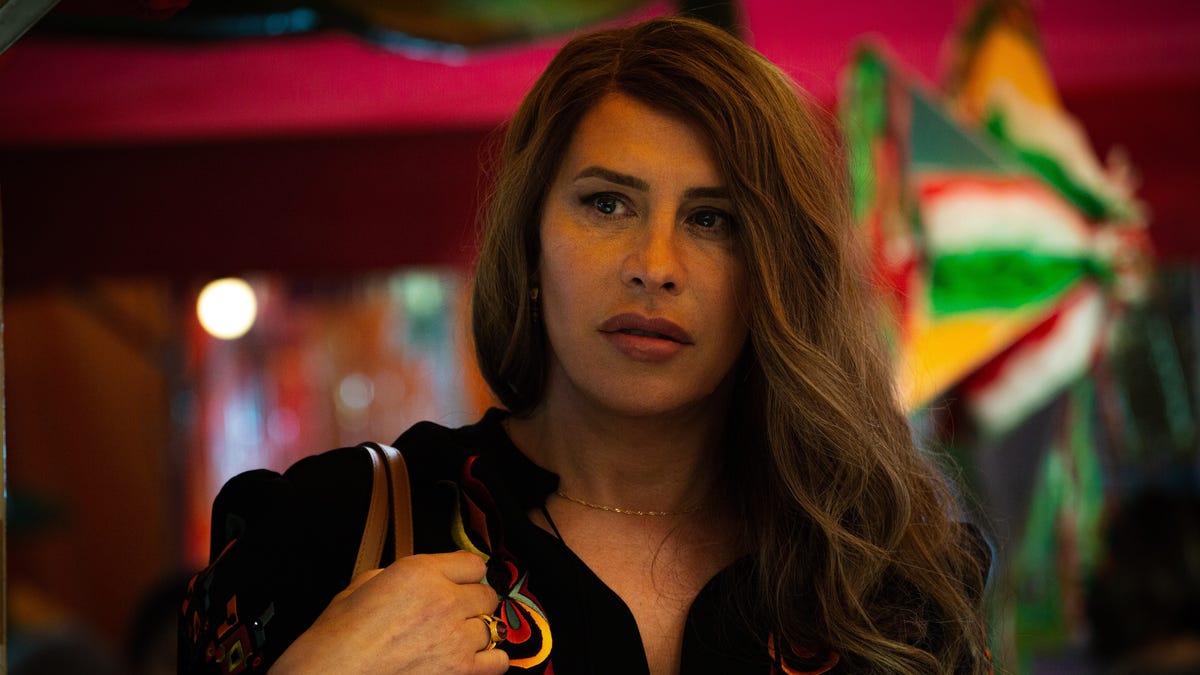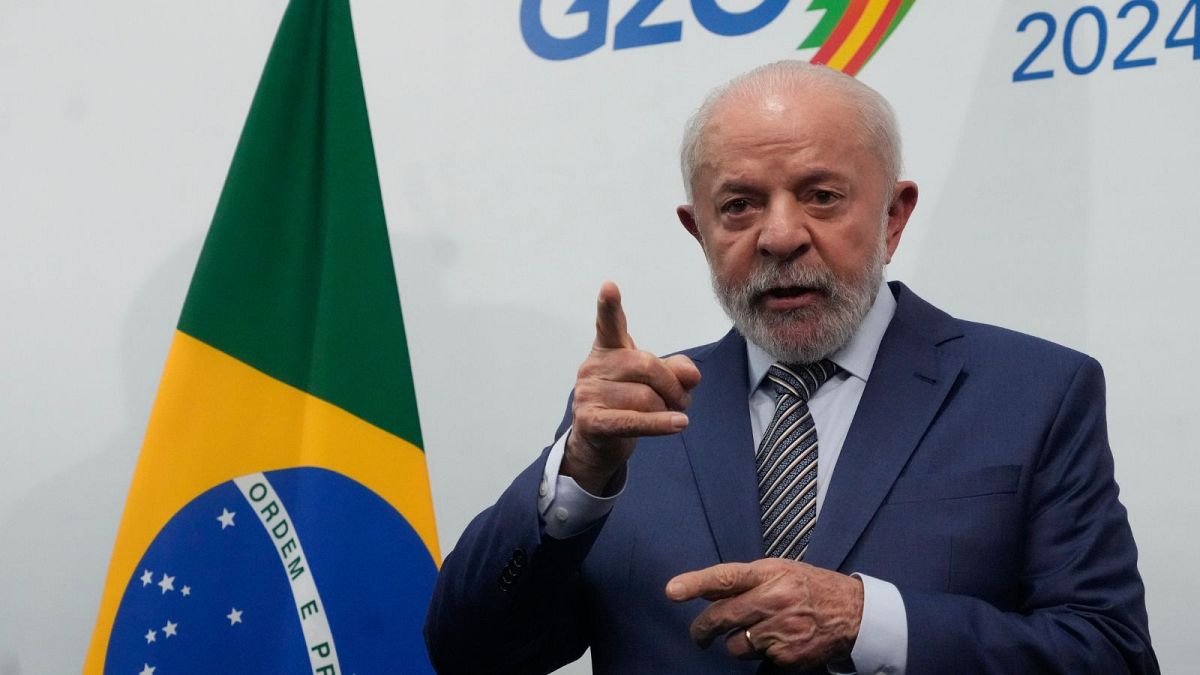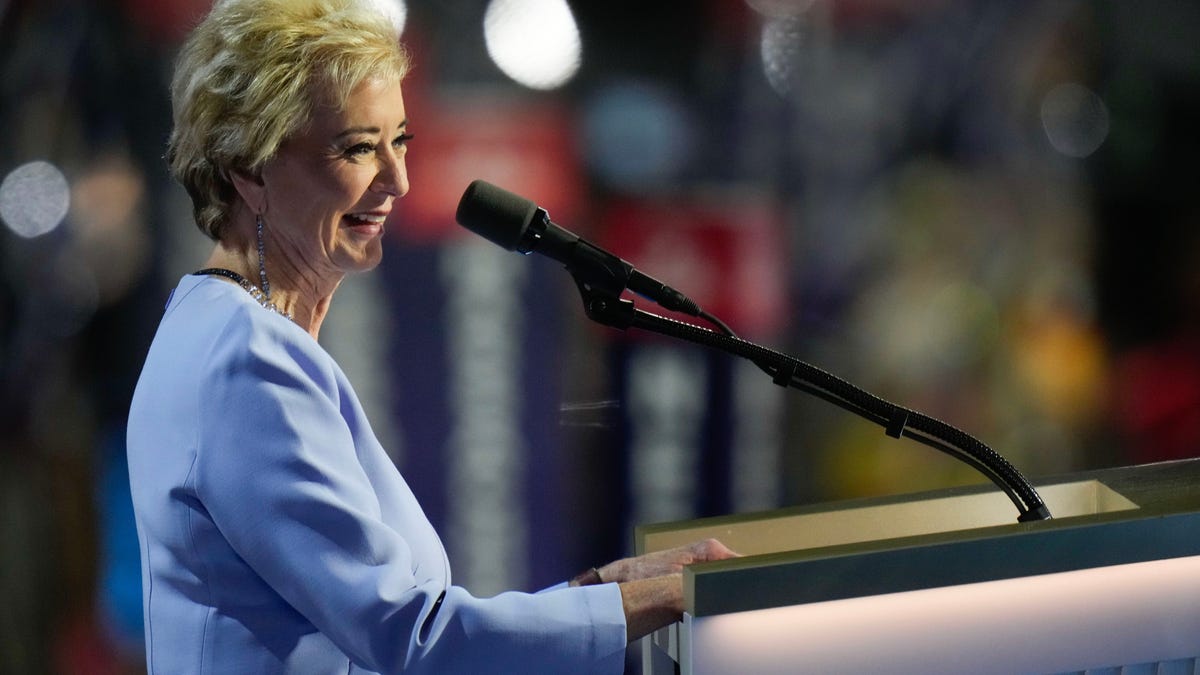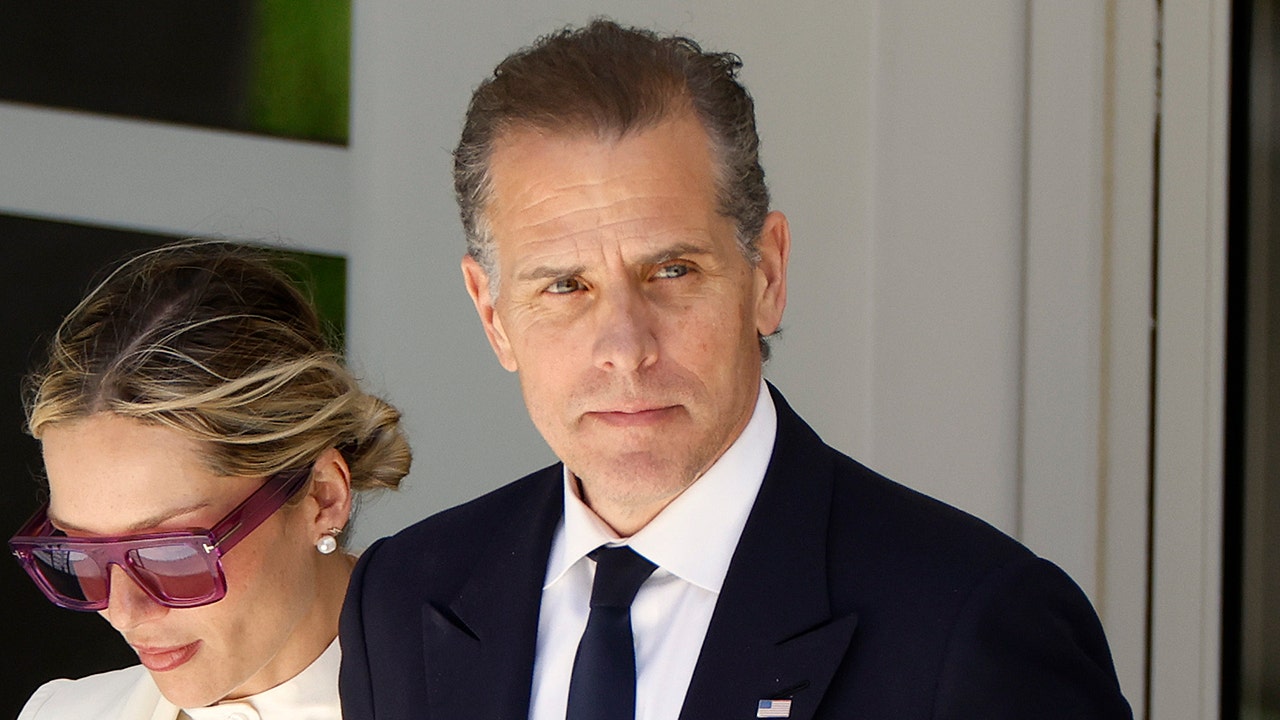Movie Reviews
Stream It Or Skip It: ‘The Flash’ on VOD, The End of an Era for DC

Where to Stream:
Birds of Prey (and the Fantabulous Emancipation of One Harley Quinn)
Powered by Reelgood
Faster than, I dunno, something really fast, The Flash (now streaming on VOD services like Amazon Prime Video) crashed and burned theatrically, and only entering the Speed Force might alter that fact. That’s because the Speed Force is the “extradimensional energy force” that allows the Flash to travel through time, see. And you’d have to go back pretty far, considering the film was in development for roughly two decades before finally settling on director Andy Muschietti (the It movies). And then it endured Covid-related delays. And then it endured significant upheaval at DC Studios and Warner Bros. And then it endured star Ezra Miller’s multiple arrests stemming from a bunch of troublingly erratic and violent public incidents. And then it tried to right the ship by announcing that it would feature Michael Keaton as Batman, donning the cape and cowl for the first time in 30 years. And then as the theatrical movie biz struggles and faces ballooning Superhero Fatigue, it flopped. All that stuff needs to be mentioned for the reportage portion of this review, but from here on out, we’re going to decontextualize The Flash from all its sour context and see if it somehow manages to function as a movie.
THE FLASH: STREAM IT OR SKIP IT?
The Gist: THE FLASH NEEDS CARBS. He burns oodles of energy being incredibly stupidly dangerously fast, you know. That’s why his alter ego Barry Allen’s (Miller) go-to sandwich has peanut butter, honey and raisins on it. And if he doesn’t get his macros situated, he might not be able to run so fast that lightning shoots out his ass, all the way to Gotham City at the request of his pal Batman, and rescue a bevy of newborns from a hospital that’s rapidly being devoured by a massive sinkhole. Just how fast is the Flash? As the babies plummet out a window to the hard, hard ground below, he has plenty of time to burgle a vending machine for more fuel-snacks before saving them. He’s also so fast, he can travel through time, not by reversing the Earth’s rotation like Superman, but by entering the Speed Force, which manifests on the screen in a wretched smear of godawful CGI. But I’m getting ahead of myself.
It must be noted that the Batman that Barry/Flash pals around with here is played by Ben Affleck; the Keaton Batman won’t turn up until after the Flash enters the Speed Force and finds himself in an alternate reality. This is something the Affleck Batman warns him against doing, because he could apocalyptically alter the space-time continuum and shit like that. But Barry is hellbent on going back in time to save his mother (Maribel Verdu) from being murdered, and his father (Ron Livingston) from being wrongly accused of the homicide, a scene we see in – hold onto your hats my friends – a FLASHback. He realizes if he pops into the timeline and does one tiny little inconsequential thing and pops back out, his parents’ lives won’t be ruined. It’s foolproof! The perfect plan! What. Could possibly. Go wrong?
And the answer to that is, oh jeez, so many things. First, a mysterious figure hanging out in the Speed Force jams up Barry’s plans, and then he meets his 18-year-old self (also Miller exclamation point!), and then he loses his powers as his 18-year-old self acquires his powers, and then General Zod (Michael Shannon) appears to destroy the planet like he tried to do in Man of Steel, and then the two Barrys try to track down the Justice League for help but Wonder Woman and Cyborg and Aquaman aren’t around because they don’t exist in this timeline and the budget of the movie is already too damn big, and then they learn that this timeline’s Batman is played by Keaton, and then they convince the Keaton Batman to help them find Superman, and then Keaton delivers a line cribbed from The Lego Batman Movie. Like I said, so many things.
What Movies Will It Remind You Of?: Multiverse shenanigans? Haven’t seen that before in any other movies recently, have we? Most are better than The Flash: Doctor Strange and the Multiverse of Madness, Everything Everywhere All at Once, the two Spider-Verses. But what The Flash most resembles is, of course, Spider-Man: No Way Home, since both films resurrect stars from past films to BLOW our MINDS and also exploit the snot out of your nostalgia. Oh, and there’s multiple on-the-nose references to Back to the Future.
Performance Worth Watching: Miller is weirdly charismatic and exhibits keen comic timing in a dual role. One of the film’s more enjoyable components is the dynamic between Mature Barry, who was a little goofy before but tones down his eccentricity in the presence of his other self, and Immature Barry, who’s happy and isn’t burdened by the trauma of being an orphan and jibber-jabbers endlessly and has a highly irritating laugh, which bodes well for him if he should decide to become a YouTuber. All this is a way of saying, hey, it’s too bad about Ezra Miller, because at this point, his career appears to be nuked.
Memorable Dialogue: This is not the Lego Batman quote, it’s by the Affleck Batman, but it sounds like something Lego Batman would say: “My ego’s way too big to say thank you to someone else.”
Sex and Skin: None.
Our Take: The Flash is the C+iest of all C+ movies. Somewhere in this overstuffed 144-minute mess are the following things:
- The signature highly amusing comedy of John Francis Daley and Jonathan Goldstein, who were originally signed to write and direct, but ultimately abandoned ship (their script landed on the desk of Christina Hodson — of Birds of Prey “fame” — for a rewrite). Their goofy brand of action-comedy humor, established in Game Night and Dungeons and Dragons: Honor Among Thieves, bursts ebulliently forth at times, and is the film’s most endearing quality. (One wonders if a Daley-Goldstein directorial effort would have had better results, or if they would’ve been steamrolled by the DC machine.)
- The signature dour tone of other DC films, which tend to take themselves far too seriously. It’s leavened by the Daley-Goldstein stuff, and also Barry’s moderately affecting I-lost-my-mother emotional sludge. This is a long way of saying The Flash is tonally inconsistent.
- Some amazing visual-effects work, specifically the highly effective instances where Miller shares the frame and interacts with himself. Doppelganger VFX tech is as convincing as ever.
- Some exceptionally putrid visual-effects work, specifically the CGI, which doesn’t even bother to make the fight/action sequences not look like cartoons or video game cutscenes. It’s even worse in the de-aging/deepfake dept., where specific faces (living or dead) you’ll recognize from specific past films (NO SPOILERS!!!1!!!11!!!1!!) are uncanny-valleyed into oblivion. How a $200 million-and-then-some budget results in such eyeball-excoriating FX is beyond the palest pale.
- References! Oh MY gosh, there are so many references in this movie, to other DC movies and movies that almost existed but don’t exist and other time-travel movies and cartoon versions of familiar characters, and more. If you like to be reminded that you know things and remember things, this movie will do that over and over again.
There are more things in this movie, but these are the big things. The movie is just a bunch of things tossed together with the Sad Barry arc weaving its way through them all, but unable to draw them together into something manageable. It feels relentlessly engineered to be everything etc. all at etc. etc., because that’s what’s hip and cool and with-it in the modern superhero-cinema game, but those engineers don’t seem to care if the final product is visually or thematically coherent (you can truly sense how the production churned through writers, directors, producers and execs). There’s a lot to like about The Flash; there’s a lot to dislike about The Flash. “How do you like our endless paradox?” a character asks at one point, a slashy bit of meta-critical commentary if I’ve ever heard it, and one that sums up the experience of watching DC Universe movies in general.
Our Call: The Flash may be fast, but he’s still a step behind the cinematic competition. There’s some diverting entertainment to be had here, but just as many opportunities to be baffled or annoyed. So SKIP IT for now, and maybe wait to STREAM IT for free when it eventually hits Max.
John Serba is a freelance writer and film critic based in Grand Rapids, Michigan.

Movie Reviews
'Wicked' Review: A Wonderful Bit of Cinematic Wizardry — FilmSpeak

The last time we saw anything Wizard of Oz related on the cinematic stage was more than a decade ago, with Sam Raimi’s often overlooked prequel effort, ‘Oz the Great and Powerful’. What folks have managed to remember about that one, they usually recall between groans and mumble through palmed faces.
That was a film that was, and still is, criticized for lackluster special effects, a suspect cast, and an adhesion to a corny tone that bled into the film’s visuals, as well as impacted the screenplay. Raimi, in accordance with his cinematic character, preferred kinetic camera movements and sharp colors and lighting over other such worries about tonal cohesion and character, at least in that instance.
What’s become odd in retrospect, factoring in the release of the topic at hand, ‘Wicked’, is that the new film struggles with the same issue in a slightly different way. Sure, Wicked’s computer generated elements are cleaner, and much glossier, than anything the world of Oz had to offer in 2013.
But the new film doesn’t just utilize those effects — it relies on them. Wicked has become yet another unintentional bastion for slapping CGI on every single scene, and every little thing. Impressive practical sets here are washed out with brown and grey digital overlays; the sunshine has lost the colorful aura which defines it, and the moon emits only a flat blue hue.
Where is the true middle ground for bringing Oz to life on the visual front, then? That still isn’t clear, but in the case of the newer film, we’ve taken a step in the right direction with many new merits.
Movie Reviews
Wicked movie review & film summary (2024) | Roger Ebert
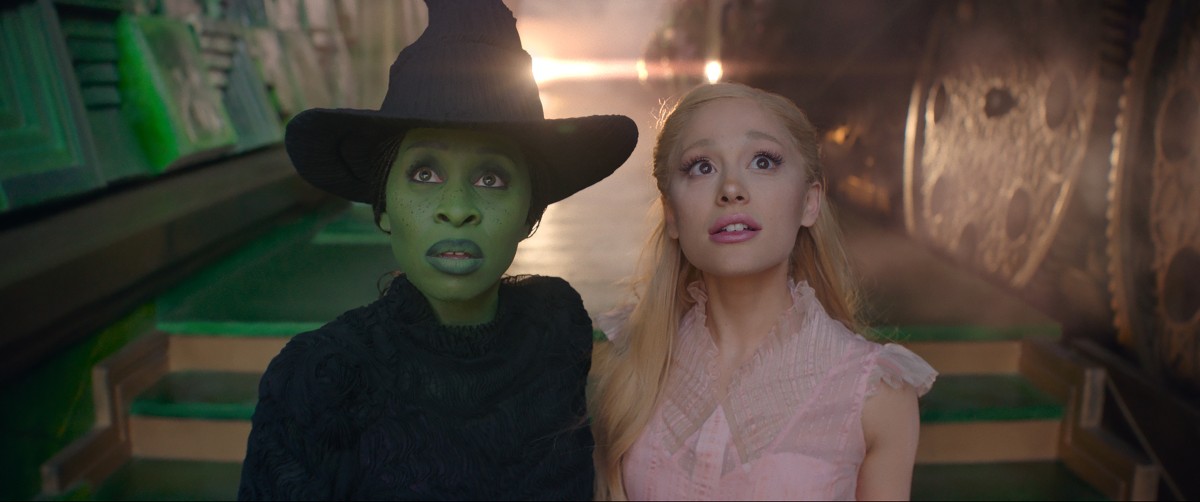
The razzle-dazzle that’s Jon M. Chu’s bread and butter is on glorious display in “Wicked,” the big-screen version of the beloved Broadway musical.
When it’s all about the spectacle of big, splashy production numbers, this prequel to “The Wizard of Oz” is thrilling, whether we’re in Munchkinland, the Emerald City or the campus of Shiz University, where a young Wicked Witch of the West and Glinda the Good Witch of the North first cross paths. As we’ve seen from the director’s previous films including “Crazy Rich Asians” and “In the Heights,” Chu is uniquely adept at presenting an enormous song-and-dance extravaganza without getting lost in it. His sense of pacing and perspective draw us in and center us within the swirling fantasy.
It helps greatly that he has deeply talented stars in Cynthia Erivo and Ariana Grande: magnetic multi-hyphenates who can meet every physical and emotional challenge of these iconic characters. Following in the footsteps of Idina Menzel and Kristin Chenoweth would seem like a daunting task, but Erivo and Grande bring their own vocal power and dramatic interpretation to the roles of Elphaba and Glinda, respectively. You truly feel the friendship between these opposites, particularly in one beautiful, wordless dance sequence where they forge their unlikely bond, which is moving in its understatement. That’s the foundation of this story, so it’s crucial that we know their connection is true for its destruction to be meaningful.
Far less effective is the way Chu, working from a script by Winnie Holzman and Dana Fox, based on the novel by Gregory Maguire, wedges in the movie’s heavier themes of authoritarianism. Yes, they are baked into the story: We know from watching 1939’s “The Wizard of Oz” countless times that the wizard is a con artist who rules by fear. His deception is literally one of smoke and mirrors. That’s all in the source material of the “Wicked” stage production, as well, for which Holzman wrote the book and Stephen Schwartz wrote the music and lyrics. Here, in film form, the tone swings awkwardly between upbeat wonder and dark oppression. This is a world in which minorities are hunted, placed in cages and prevented from speaking, where a charismatic leader (a playfully evil Jeff Goldblum) persecutes a woman of color. It is not subtle, and it feels all-too relevant to our times, despite originating decades ago. It also drags down the energy of this epic tale.
And yet, overstuffed as the film is at 2 hours and 40 minutes, this is only part one: “Wicked” ends where the intermission occurs in the stage show, with part two coming in November 2025. It’s a lot to ask of an audience. Still, people who love this story and these characters will be delighted, and there’s much here for people who aren’t familiar with the musical but are looking for a cinematic escape around the holidays.
“Wicked” begins with Grande’s Glinda descending majestically into Munchkinland to inform her enthusiastic fans that the rumors are true: The witch really is dead. Then it flashes back to how she and the green-hued Elphaba (the Wicked Witch’s first name) became unlikely allies in college. Elphaba has always been bullied and ostracized because of the color of her skin; Glinda—or Galinda, as she’s known at this point—is a pretty, pampered mean girl who’s always gotten her way. (Bowen Yang is a hoot as one of her loyal sycophants.)
But once they’re forced to room together, they eventually realize, to their surprise, that they genuinely see each other in a way no one ever has before. Galinda’s makeover anthem “Popular”—one of the most popular songs from the show—is among the film’s highlights, and a great example of the technical prowess “Wicked” offers. The costume design from Paul Tazewell (“West Side Story”) and production design from longtime Christopher Nolan collaborator Nathan Crowley are exquisite throughout but especially here. Alice Brooks’ cinematography is consistently wondrous, but her use of hot pink lighting as Galinda’s at the height of her power is really evocative.
Chu’s usual choreographer, Christopher Scott, delivers again with vibrant, inspired moves, particularly in the elaborate “Dancing Through Life,” which takes place in the school’s rotating, multilevel library. “Bridgerton” star Jonathan Bailey gets a chance to show off his musical theater background here, and he’s terrifically charming as the glib Prince Fiyero, the object of both Elphaba and Galinda’s romantic interests. Michelle Yeoh brings elegance and just a hint of danger to her role as Madame Morrible, the university’s sorcery professor. And Peter Dinklage lends gravitas as the resonant voice of Dr. Dillamond, a goat instructor who, like other talking animals in Oz, finds himself increasingly in peril.
But it’s that connection between Erivo and Grande that gives the film its emotional heft. Erivo does do much with her eyes to convey Elphaba’s sadness and loneliness and, eventually, her hope and determination. There’s a directness about her screen presence that’s immediate and engaging, and of course she can sing the hell out of these demanding songs. Grande meets her note for note and once again displays her comic chops, but it’s the little choices that make her portrayal of the perfect Galinda feel human: a jerky perkiness that’s slightly dorky. The blonde tresses and array of pink dresses scream confidence, but deep down she’s a try-hard whose desire to be liked is her driving motivation.
As undeniably crowd-pleasing as “Wicked” is in its big moments, these smaller and more intimate details are just as magical.
Movie Reviews
Kishkindha Kaandam Movie Review

The Malayalam film Kishkindha Kaandam, directed by Dinjith Ayyathan, hit theaters on September 12, 2024, and quickly became a box office success, earning over ₹70 crore on a modest ₹7 crore budget. With a stellar cast including Asif Ali, Aparna Balamurali, and Vijayaraghavan, this movie has now begun streaming on OTT platform Disney plus Hotstar. Let’s dive into the Kishkindha Kaandam Movie Review to see what makes it stand out.
Plot Overview
Set in a village bordering a forest, the story revolves around Appu Pillai (Vijayaraghavan), a retired army officer living with his son Ajay Chandra (Asif Ali), daughter-in-law Praveena (Vaishnavi Raj), and grandson Chachu (Aarav). Tragedy strikes when Praveena passes away, and Chachu mysteriously disappears.
While the investigation into Chachu’s disappearance forms a crucial part of the narrative, the police station instructs Appu to surrender his licensed gun due to the upcoming elections. However, the gun has been missing for a long time, complicating matters further. The police warn that even a single missing bullet could lead to serious consequences.
As Ajay remarries Aparna (Aparna Balamurali), she moves into the family home and learns that Appu suffers from memory loss. Aparna grows suspicious of Appu’s behavior, particularly his reluctance to let anyone enter his room and his habit of burning items in a secluded area. Her investigation into Chachu’s disappearance and the missing gun forms the crux of the film.
Analysis
Kishkindha Kaandam revolves around three key characters: the father, the son, and the daughter-in-law. Aparna’s desire to find Chachu and bring happiness back to her family drives the first half of the movie. As she uncovers clues linking Appu to Chachu’s disappearance and the missing gun, the tension escalates in the second half.
The narrative cleverly intertwines memory loss, a missing gun, and a child’s disappearance, keeping the audience guessing until the very end. The film’s strength lies in its minimalist approach, focusing on a small cast and localized settings. The title, Kishkindha Kaandam, reflects the village’s unique connection to monkeys, adding a symbolic layer to the plot.
Director Dinjith Ayyathan skillfully maintains suspense without relying on exaggerated drama, keeping the story grounded in realism. This approach makes the twists and turns feel natural and engaging.
Performances
Vijayaraghavan delivers a standout performance as the enigmatic and suspicious Appu Pillai. His portrayal of a man struggling with memory loss while harboring secrets is both compelling and nuanced. Asif Ali shines as Ajay, caught between family responsibilities and professional duties. Aparna Balamurali impresses with her natural acting, convincingly portraying a new bride navigating the complexities of her new family while trying to uncover the truth.
Technical Aspects
Cinematography: Ramesh’s visuals beautifully capture the lush, forested village, enhancing the story’s atmosphere.
Music: Mujeeb Majeed’s haunting background score elevates the suspense.
Editing: Suraj’s crisp editing ensures a tight narrative, particularly in the second half.
Malayalam cinema continues its tradition of seamlessly integrating stories with authentic locations, making the events on screen feel believable and immersive.
Verdict
Kishkindha Kaandam is a captivating mystery thriller with strong performances, a well-crafted screenplay, and stunning visuals. It’s a testament to the power of storytelling and naturalistic filmmaking. This is a movie that can be enjoyed with the whole family.
-

 News1 week ago
News1 week agoHerbert Smith Freehills to merge with US-based law firm Kramer Levin
-
/cdn.vox-cdn.com/uploads/chorus_asset/file/25724877/Super_Nintendo_World.png)
/cdn.vox-cdn.com/uploads/chorus_asset/file/25724877/Super_Nintendo_World.png) Technology1 week ago
Technology1 week agoThe next Nintendo Direct is all about Super Nintendo World’s Donkey Kong Country
-
Business7 days ago
Column: OpenAI just scored a huge victory in a copyright case … or did it?
-

 Health7 days ago
Health7 days agoBird flu leaves teen in critical condition after country's first reported case
-

 Business3 days ago
Business3 days agoColumn: Molly White's message for journalists going freelance — be ready for the pitfalls
-
Politics1 week ago
Editorial: Abortion was on ballots across the country in this election. The results are encouraging
-
World1 week ago
Sarah Palin, NY Times Have Explored Settlement, as Judge Sets Defamation Retrial
-

 Politics2 days ago
Politics2 days agoTrump taps FCC member Brendan Carr to lead agency: 'Warrior for Free Speech'




